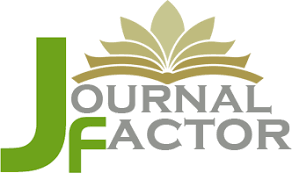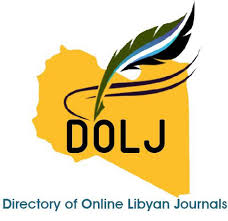Thyroid disorders in Libyan patients with Down syndrome
DOI:
https://doi.org/10.54361/LJMR.15.2.03Keywords:
Down syndrome, Thyroid function testAbstract
Objective: The association of types of thyroid disorders in Down syndrome patients is well known. Our aim to investigate the thyroid function inLibyan children with Down’s syndrome (DS). Methods: Fifty-one Libyan with DS who were followed regularly in our outpatient clinic of endocrine department, Pediatric department, Tripoli University Hospital were studied. There were 37 males and 14 females, with a mean age of 5.7 ± 2.9 years. Originally; were from different Libyan cities, 30 patients from Tripoli (58.8%), 10 from west of Libya (19.6%), 8 from middle of Libya (15.7%) and 3 from south (5.9%). Thyroid function were measured in all DS patients. Results: In overall regarding thyroid dysfunction, Thirty-Nine subjects DS patients (76%) with thyroid dysfunction. Diagnostic age were ranged from first month of age up to 129 months (10 years) of age. Twenty-two Down syndrome patients (43.1%) diagnosed at first visit. Eleven patients of them (21.5%) of the DS patients presented during first month of age with high level of TSH, diagnosed as congenital hypothyroidism. Furthermore, 9 patients from them with congenital heart disease. Mean age of their mothers 33.4 ± 7.0. 15 mothers their age between 21-29 years and 25 mothers were in third decade of age. Only 11 patients their mother’s ≥40 years old, Conclusions: Thyroid dysfunction is common in Libyan subjects with DS. Children with Down syndrome is very important. Our study would support this recommendation even in children in different of age and without specific thyroid symptom etiology, in particular as they advance in age.
Downloads
References
1. BaxterR G, LarkinsR G, MartinF I, HeymaP, MylesK, RyanL(1975) Down syndrome and thyroid function in adults. Lancet;2:794-796.
2. Hughes VC, Cameron J, Zoongoonetilleke AFR. (1982) The prevalence of thyroid dysfunction in mentally handicapped inpatients. J MentDefic Res;26:115-120.
3. Aarskog D. (1969) Autoimmune thyroid disease in children with mongolism. Arch Dis Child;44:454-460.
4. Takahashi H, Bordy MD, Sharma V. (1979) Hyperthyroidism in patients with Down syndrome. Clin Pediatr;18:273-275.
5. Thase ME. (1982) Reversible dementia in Down syndrome. J MentDefic Res;26:111- 113.
6. Murdoch JC, Ratcliffe DVA, Mclarty DG, RodgerJC, RatcliffeJG(1977) Thyroid function in adults with Down syndrome. J Clin Endocrinol;44:453-458.
7. Lobo ED, Khan M, Tews J. (1980) Community study of hypothyroidism in Down syndrome. Br Med J;280:1253-1255.
8. Kinnell HG, Gibbs N, Teale JD, Smith J. (1987) Thyroid dysfunction in institutionalised Down syndrome adults. Psychol Med;17:387–392.
9. Korsager S, Chatham EM, OstergaardKristensen HP. (1978) Thyroid function tests in adults with Down syndrome. Acta Endocrinol;88:48–54.
10. Friedman DL, Kastner T, Pond WS, O’Brien R. (1989) Thyroid dysfunction in individuals with Down syndrome. Arch Intern Med;149: 1990–1993.
11. Ivarsson SA, Ericson UB, Gustafsson J, Forslund M, Vegfors P, Anneren G. (1997) The impact of thyroid autoimmunity in children and adolescents with Down syndrome. Acta Paediatr;86:1065–1067.
12. Selikowitz M. (1993) A five-year longitudinal study of thyroid function in children with Down syndrome. Dev Med Child Neurol;35:396–401.
13. Mani C. (1988) Hypothyroidism in Down syndrome. Br J Psychiatry;153:102– 104.
14. Goday-Arno A, Cerda-Esteva M, FloresLe-Roux J. (2009) Hyperthyroidism in a population with Down syndrome. Clin Endocrinol;71:110–114
15. Farag TI, Al-Awadi SA, Al-Othman SA, Sundareshan TS, Krishna Murthy DS, Usha R, Mady SA, Uma R. (1988) Down syndrome and trisomy 18 in the Bedouins. Am J Med Genet;29:943–944.
16. Fawzi E. Alia Hossam A. Bayoumyb Abdul Salam R. (2002) Thyroid Function in Kuwaiti Subjects with Down’s Syndrome. Med Principles Pract;11:206–209
17. Zori RT, Schatz DA, Ostrer H, Williams CA, Spillar R, Riley WJ. (1990) Relationship of autoimmunity to thyroid dysfunction in children and adults with Down syndrome. Am J Med Genet Suppl;7:238–241.
18. Pozzan GB, Rigon F, Girelli ME, Rubello D, Busnardo B, Baccichetti C. (1990) Thyroid function in patients with Down syndrome: Preliminary results from noninstitutionalized patients in the Veneto region. Am J Med Genet Suppl;7:57–58. http://www.ljmr.com.ly/ eISSN:2413-6096 Libyan J Med Res. 2021;15(2):62-68 68
19. Dinani S, Carpenter S. (1990) Down syndrome and thyroid disorder. J MentDefic Res;34:187–193.
20. Pueschel SM, Pezzullo JC. (1985) Thyroid dysfunction in Down syndrome. Am J Dis Child;139:636–639.
21. Sare Z, Ruvalcaba RH, Kelley VC. (1978) Prevalence of thyroid disorder in Down syndrome. Clin Genet,14:154–158.
22. Fort P, Lifshitz F, Bellisario R, J Davis, LanesR., PuglieseM., RichmanR., PostEM., DavidR.(1984) Abnormalities of thyroid function in infants with Down syndrome. J Pediatr 104:545–549.
23. Tuysuz B, Beker DB (2001) Thyroid dysfunction in children with Down’s syndrome. ActaPaediatr 90(12):1389–1393
24. Pascanu I, Banescu C, Benedek T, Duicu C, Csep K, Dema A(2009) Thyroid dysfunction in children with Down’s Syndrome. ActaEndocrinol (BUC) 5(1):85–92 25. Cutler AT, Benezra-Obeiter R, Brink SJ (1986) Thyroid function in young children with Down syndrome. Am J Dis Child 140:479–483
26. KevaleeUnachak, PranootTanpaiboon, Yupa daPongprot, RekwanSittivangkul, SuchayaS ilvilairat, PrapaiDejkhamron, JutamasSudas na(2008) Thyroid functions in children with Down’s syndrome. J Med Assoc Thailand 91(1):56–61
27. Levy HL, Mitchell ML. (1982) The current status of newborn screening. HospPract, July; pp 89-97.
28. Samuel A.M., Krishna Murthy D.S., Kadival G.V., Patel Z.M., Mehta M.N., Ganatra R.D., Ambani L.M. (1981). Thyroid function studies in young Down's syndrome. Indian Journal of Medical Research, 73, 223-227.
29. Sharav T, Collins RM, Baab PJ (1988) Growth studies in infants and children with Down’s syndrome and elevated levels of thyrotropin. Am J Dis Child;142:1302–1306.
Downloads
Published
Issue
Section
License
Copyright (c) 2021 Millad Ghawil , Khadija Muftah Abulbeida , Milad Doggah (Author)

This work is licensed under a Creative Commons Attribution-NonCommercial-NoDerivatives 4.0 International License.
Open Access Policy
Libyan journal of medical Research (LJMR).is an open journal, therefore there are no fees required for downloading any publication from the journal website by authors, readers, and institution.
The journal applies the license of CC BY (a Creative Commons Attribution 4.0 International license). This license allows authors to keep ownership f the copyright of their papers. But this license permits any user to download , print out, extract, reuse, archive, and distribute the article, so long as appropriate credit is given to the authors and the source of the work.
The license ensures that the article will be available as widely as possible and that the article can be included in any scientific archive.
Editorial Policy
The publication of an article in a peer reviewed journal is an essential model for Libyan journal of medical Research (LJMR). It is necessary to agree upon standards of expected ethical behavior for all parties involved in the act of publishing: the author, the journal editorial, the peer reviewer and the publisher.
Any manuscript or substantial parts of it, submitted to the journal must not be under consideration by any other journal. In general, the manuscript should not have already been published in any journal or other citable form, although it may have been deposited on a preprint server. Authors are required to ensure that no material submitted as part of a manuscript infringes existing copyrights, or the rights of a third party.
Authorship Policy
The manuscript authorship should be limited to those who have made a significant contribution and intellectual input to the research submitted to the journal, including design, performance, interpretation of the reported study, and writing the manuscript. All those who have made significant contributions should be listed as co-authors.
Others who have participated in certain substantive aspects of the manuscript but without intellectual input should only be recognized in the acknowledgements section of the manuscript. Also, one of the authors should be selected as the corresponding author to communicate with the journal and approve the final version of the manuscript for publication in the LJMR.
Peer-review Policy
- All the manuscripts submitted to LJMR will be subjected to the double-blinded peer-review process;
- The manuscript will be reviewed by two suitable experts in the respective subject area.
- Reports of all the reviewers will be considered while deciding on acceptance/revision or rejection of a manuscript.
- Editor-In-Chief will make the final decision, based on the reviewer’s comments.
- Editor-In-Chief can ask one or more advisory board members for their suggestions upon a manuscript, before making the final decision.
- Associate editor and review editors provide administrative support to maintain the integrity of the peer-review process.
- In case, authors challenge the editor’s negative decision with suitable arguments, the manuscript can be sent to one more reviewer and the final decision will be made based upon his recommendations.











